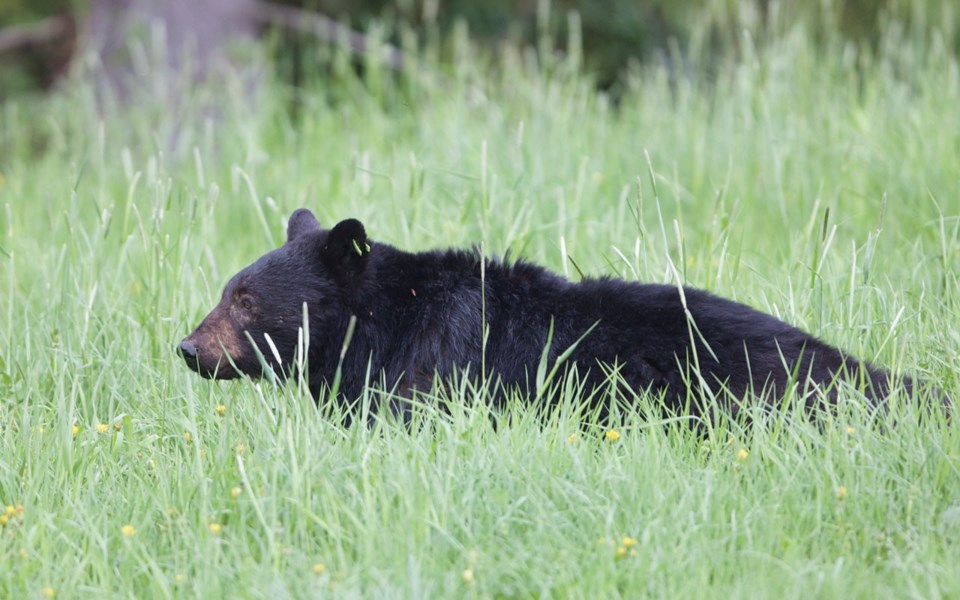In front of a packed audience at the Whistler Public Library, Whistler's go-to bear expert, Michael Allen, updated the community on the health of its bear population in a fascinating presentation on Thursday, Jan. 11.
Allen said he identified 55 black bears this year in Whistler, including 17 adult females and 20 adult males. That's down slightly from last year's count, when Allen tallied 57, but not a concern.
The 17 female bears represent the "highest density of mother bears I've ever seen," explained Allen, who added there may even be too many for the area.
"We can't have 20 mother bears here; we probably shouldn't even have 10. We should probably have five or six and that's it," he said, noting that "enhanced food," like the clover that grows on ski runs, makes for easy feeding.
While there are many younger, "college guy" bears in Whistler, there are few adult, alpha male bears, said Allen. Older males play an important role in terms of population control, pushing younger males out of areas with female bears, leading to increased cub survival rates.
"As soon as our older-male population started dropping, cub survival started dropping too, from young males getting to them," said Allen, who noted that adult black bears will kill cubs if they don't believe that they sired them.
When Allen started studying Whistler bears over 20 years ago, the survival rate for cubs was around 70 per cent, but now it's around 50. "We're usually losing half our cubs, and this is usually to male bears," he said. Four cubs were lost this year to "natural causes," added Allen.
A bear guide for Whistler Blackcomb, Allen has been a keen watcher of the animals for decades. "I'm basically just a guy that likes bears — I've been doing it for a long time, 33 years," he said, flanked by bear skulls and bear hides displayed at the front of the room.
Over the last 24 years, Allen said 300 bears have been killed because of conflict and cars — but things are trending in the right direction. "Whistler's a lot better now, with its food, garbage, and perception of bears, and issues like that," he said.
In 2010, Allen began using remote cameras to view bears — in both Whistler and surrounding areas — attaching them to trees and placing them next to bear trails or feeding sites.
Said Allen: "Once I started using them it opened up a whole door to what you can learn about bears and other animals.
"I love not seeing them, and then the camera gets them. I'm not there to disturb them."
Allen showed a capture of Slumber, a large, adult black bear. "Even in years of poor berry crops, he can expand his area, moving into Wedge and Garibaldi Provincial Park," said Allen, adding that Slumber's "got it good," with "lots of girlfriends" and plenty of healthy food to eat.
"If we have a bad berry crop, Slumber will sit up there and eat clover for six to seven hours a day September through October. Clover's an amazing food but it's not really natural," said Allen.
He also showed a video of a black bear sow rubbing her back on a broken tree, followed by a video of her cub scaling it with ease.
"This is instinctive behaviour," explained Allen. "Mom doesn't teach it. Cubs start climbing tree stumps, small trees, and eventually (they move to) old-growth trees. They don't seem to have any fear or concept of fear of heights."
The specific tree in the video is a popular spot for Whistler bears, he explained: "That little tree has been rubbed on by almost 30 different bears."




